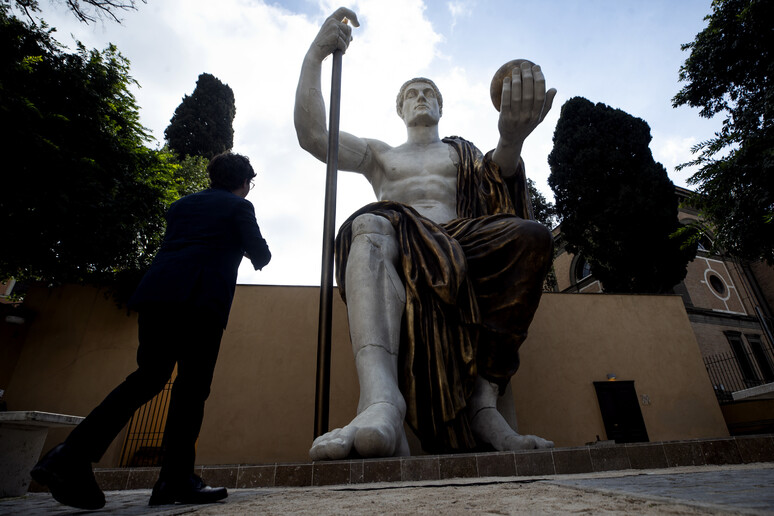Visitors to Rome's Capitoline Museums
can as of Tuesday admire a life-size reconstruction of the
Colossus of Constantine based on the few known remaining pieces
from the original statue dating to the fourth century AD.
The reconstruction of the statue of the great Roman emperor
(306-337 AD), measuring 13 m in height, stands in the gardens of
Villa Caffarelli on the Capitoline hill and uses innovative
techniques resulting from a collaboration between the Factum
Foundation for Digital Technology in Preservation, Fondazione
Prada and the Rome cultural and archaeological superintendent's
office led by Claudio Parisi Presicce.
The colossal statue, discovered at the Basilica of Maxentius
near the Colosseum in the 15th century, is considered one of the
most significant examples of late ancient Roman sculpture.
Today only a few monumental marble fragments - the head, right
arm, right wrist, right hand, right knee, right shin, right
foot, left foot - remain and are housed in the courtyard of
Palazzo dei Conservatori at the Capitoline Museums.
In March 2022 a team from the Factum Foundation spent three days
scanning these fragments using photogrammetry.
Each fragment was then modelled in 3D and positioned on the
digital body of the statue created using other similar cult
statues from the imperial age, including the colossal
first-century AD statue of Jupiter in the State Hermitage Museum
in St Petersburg and the large plaster copy of the statue of
Emperor Claudius, portrayed as Jupiter, in the Ara Pacis Museum
in Rome.
Thereafter, the material reconstruction of the Colossus was
carried out using a mixture of resin and polyurethane, marble
powder, gold leaf and plaster to render the marble and bronze
surfaces, with an easily assembled and removable internal
aluminium support.
The final result is on display to visitors until December 31,
2025.
ALL RIGHTS RESERVED © Copyright ANSA











